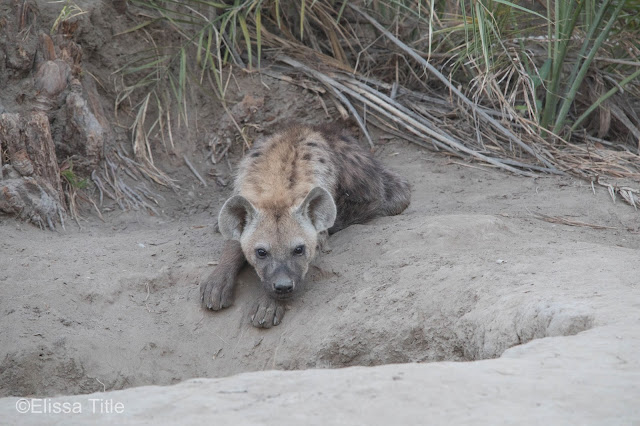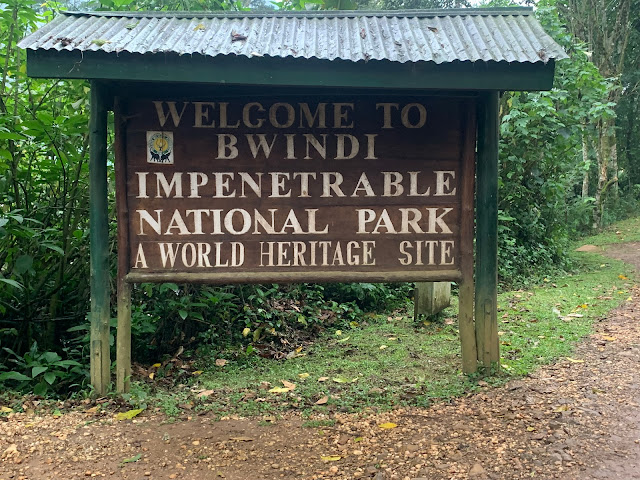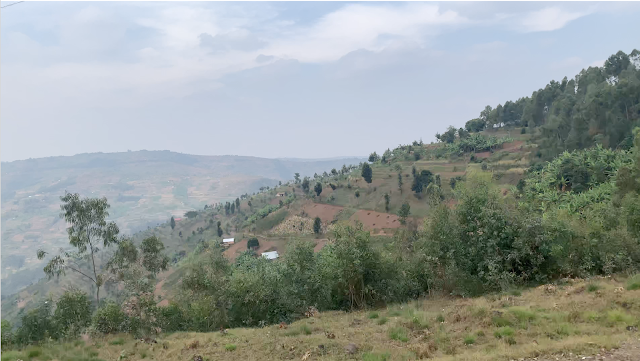One of my favorite times to photograph in Africa is golden hour. Of course, this entails waking up before 5am to get to the animals as the sun rises... But it's worth it. On this particular morning, we made a brief stop at the hyena den to see if they were up and about. One of the pups was sitting patiently at the edge of the den waiting for its mother to return with food. Like many other animals, human-wildlife conflict is a major threat to hyenas outside protected areas. Hyenas will sometimes come into conflict with humans when they prey on their livestock, and farmers often retaliate (killing the hyenas). However, spotted hyenas such as the pup pictured here are classified as the least concern on the IUCN Red List. Though there is a continuing decline in populations outside protected areas due to persecution and habitat loss, it's not seen as sufficient to warrant listing in a threatened category.
 |
Spotted hyena pup outside its den.
|
|
As we sat photographing the hyena pup, our local guide and tracker heard lions calling eachother... So, we sped off in search of my favorite animals in Africa. Many people don't realize how endangered lions are. We often hear about elephant and rhino conservation, but not about the conservation of other species. Lion populations are down to about 20,000 from 200,000 in 1970 and what is believed to be more than 500,000 in the 1940's. Some predict lion populations will be extinct by 2020, and lions are already extinct in 7 African countries. They've also lost more than 80% of their historic habitat. It is one of the fastest species declines known to man. Maybe that's why I'm so passionate about photographing lions. I want to show people how beautiful they are so people will want to protect this vulnerable species.
Once we found the lion pride, we were able to observe their behavior. We followed the pride for over 2 hours, watching as one male continually pushed another male away from one of the lionesses. The inferior male was badly injured and we were told he almost died about a year ago from this same injury he still has. He hasn't been completely kicked out of the pride, but the dominant male lion won't let the injured male anywhere near the females or the rest of the pride. As the lions got up to move locations, the injured male lagged behind. At one point, the dominant male thought he got a little too close and snapped at him. Below are some of my favorite photographs taken while observing the pride.
 |
An adolescent male walks towards us.
|
|
|
|
| Lions can sleep over 20 hours a day! |
 |
Two young male lions playing.
|
|
 |
| Looking towards an approaching car. |
|
 |
Lions on the move... Three in a row. The lioness, dominant male, and the injured male in the way back.
|
|
Meanwhile, the lechwe were on high alert as the lions lazily walked by in search of some shade.
After the lions stopped in the shade and we determined they were just going to sleep, we started looking for other wildlife. Our guide spotted a herd of over 20 elephants coming towards us. At the beginning of the 20th century, there were a few million African elephants, but today there are around 450,000-700,000 making them an endangered species. Botswana has more elephants within its borders than any other country on earth. While elephants elsewhere are facing a renewed threat from poaching, Botswana's elephant populations remain in rude health. Of course, we still need to continue to protect this beautiful species.
 |
Elephants walking towards us.
|
|
We also searched for some of the rhinos in the area, which have been relocated from high poaching areas. A rhino is killed about every eight hours. Hand in hand with Great Plains Conservation and &Beyond, Rhinos Without Borders aims to translocate 100 rhinos from high-risk poaching areas in South Africa to the comparative safety of Botswana. The rhinos are hung by the feet and flown by helicopter, but it's a pricey task... The budget to translocate just one rhino is $45,000. This project has proven successful so far, and we were fortunate enough to see some of the rhinos that were recently translocated to this area.
 |
One of the three rhinos we saw.
|
|
I also made some quick photo stops for birds...
As well as some photo stops for baboons.
 |
| Baby baboon posing for the camera. |
|
 |
Portrait of a Chacma baboon.
|
|
Of course, we also stopped to photograph the sunset with a sausage tree in the foreground.
 |
| Sausage tree at sunset. |
The next morning, we woke up early once more. I stopped for a quick photo of the sunrise with an African elephant...
 |
Last sunrise in the Okavango Delta.
|
|
Then, we went to find the lions. As we were driving in search of the pride, our guide noticed some lechwe's staring off into the distance. Soon, he realized why... a lioness had just made a kill! We drove over to where she was munching on a lechwe and observed her for over an hour.
At one point, the lioness got up and dragged her kill to the shade of our car. Nearby, jackals were waiting to move in on her kill. The three jackals kept getting closer and closer, but she scared them off. Our guide said the lioness probably wouldn't get much sleep that day because she needs to defend her kill.
 |
Jackals waiting to close in on the kill.
|
|
 |
| Lioness protecting her kill. |
|
After an amazing last game drive, it was time to say goodbye to the Okavango Delta... only it's not goodbye. It's a see you later. This amazing wildlife heaven has left my mom and I speechless. It is so special and is in dire need of protection.
 |
| Flying over the Okavango Delta. |
|
Thanks for reading about my African adventures... Stay tuned for our next adventure and be sure to hit the subscribe button to be notified of new posts! As always, follow my instagram @elissatitle for more pics.





























Comments
Post a Comment